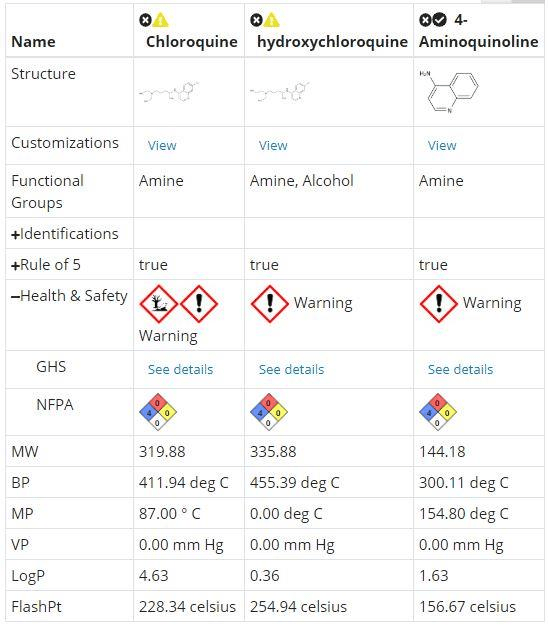By: Niteen A. Vaidya, Ph.D., CEO, ChiroSolve, Inc
Corona virus is developing as a worldwide pandemic and quickly getting out of hands in terms of possible vaccine or effective drug to cure it. Today, I would like to discuss a popular anti-malarial drug molecule “Chloroquine” and its 2 metabolites “2-hydroxychloroquine” and “4-amino chloroquine”. Note that Chloroquine gets converted to 2-hydroxychloroquine and 4-amino chloroquine (another metabolite) inside the body.
Chloroquine, an antimalarial blood schizonticide was once the drug of choice in the fight against Plasmodium falciparum. But its use is now severely limited due to widespread resistance.
2-Hydroxychloroquine, a less toxic derivative of chloroquine, is also an antimalarial blood schizonticides with similar clinical indications such as Lupus or Rheumatoid Arthritis and side effects. It is being considered effective in inhibiting SARS-CoV-2 infection in vitro [2] Both these drugs Chloroquine & Hydroxychloroquine have one asymmetric center and two enantiomers each. However, individual isomer (R) and (S) have not been studied well in terms of their biological activities.
Due to the emergence and spread of Chloroquine-resistant strains, other novel drug candidates based on the structure of Chloroquine are still being studied. Specifically, two of the 4-aminoquinoline analogs1: monoquinoline (MAQ) and bisquinoline (BAQ), have shown to enhance activity against chloroquine-resistant parasites. Due to its similar mode of action to that of chloroquine, the effectiveness of this analog in inhibiting SARS-CoV-2 infection in vitro should be studied further.
Using an interesting software tool called “Chemical Analyzer by ViridisChem, Inc. [3], I was able to get a comprehensive and very visual comparison among the 3 metabolites:
Summary of Toxicity Evaluation

Detailed Toxicity Evaluation

Physical Properties

Toxicological Properties

Toxicity Scores

References
ViridisChem is a software company offering essential toxicity data and tools for companies to move towards sustainable product development.
We have the world’s most comprehensive toxicity database with over 90 million chemicals, and utilizing this data, our software tools provide toxicity analysis of chemicals, mixtures and formulations, and product development processes.
Demonstrations

Chemical Analyzer for Lab Safety

Chemical Analyzer for Process Development
